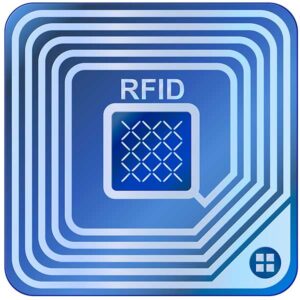By Will Shultz, Principal Consultant, Emerging Technology, Owens & Minor
What is open architecture RFID?
Unlike cabinetry-based RFID Solutions, open architecture is exactly as name suggests – an RFID solution that can be deployed to track RFID-tagged items in an open space, such as an operating room, procedural area or supply room.
A hospital using open architecture can deploy a combination of fixed and mobile RFID antennas to record inventory data across their supply locations. Fixed antennas, which are mounted to either the ceiling or wall, record inventory data automatically at configured intervals of time. Mobile antennas, in the form of RFID handheld devices, can be leveraged by users to record inventory data across supply locations, by simply waving the device to scan and record tag data. Either way, open architecture provides a simple and effective method to obtain efficient and accurate inventory data.
What are the benefits?
In today’s environment of ongoing staffing shortages and rising supply costs, open architecture RFID represents a cost-effective, efficient way for hospitals to manage their most critical supplies across patient care environments. Benefits include:
- Reduced cost: A hospital can implement an open architecture solution featuring fixed readers and/or RFID handhelds for a fraction of the cost required to implement a cabinetry-based solution. In some cases, the cost of open architecture deployments represents more than a 90% reduction in deployment costs versus cabinetry.
- Quicker deployment: An open architecture solution can be deployed in as little as 90 days.
- Greater ease and efficiency: Automated cycle counts via a fixed RFID reader or a wave of the handheld reader eliminates the need for staff to count items manually.
- Better accuracy: With inventory counts that are as much as 99.9% accurate, open architecture RFID enables users to identify missing and/or misplaced items quickly and easily.
- Flexibility and scalability: With an open architecture RFID solution, a hospital can deploy RFID tracking in any supply location, regardless of the room configuration. The facility can easily expand the solution to other storage areas as needed.
Real-time visibility and control through technology solution integration

A hospital can integrate open architecture RFID technology supported by a cloud-based inventory management platform so that product data captured during RFID scanning – whether with the fixed reader or handheld – is automatically recorded within the inventory platform.
Through this integration, clinical and supply chain teams are granted real-time inventory visibility – including on-hand quantities, locations, and expiry and recall information, for all supplies being tracked via RFID. By deploying open architecture across all supply locations, real-time location visibility allows users to quickly identify missing supplies, as well as those supplies which have been misplaced across their patient care environments.
Advanced inventory management solutions leverage artificial intelligence (AI) to analyze the RFID-captured data and present users with easy-to-understand analytics on inventory levels and supply consumption trends. The supply chain team can immediately see overstocks, understocks and backorders, and make informed decisions to improve supply availability and reduce costs and waste.
Conclusion
Open architecture RFID technology provides an efficient, cost-effective, and accurate way to manage critical supplies. By automating cycle counts, hospitals can alleviate clinical and supply chain staff of time-consuming, labor-intensive supply management tasks. With the ability to track tagged items in any storage space, open architecture RFID is a flexible and scalable solution for inventory management in the clinical environment.
Through integration with a cloud-based inventory management solution, a hospital gains real-time visibility and control of supplies across their patient care environments. And with advanced, AI-enabled analytics, a supply chain team has actionable insights to help improve operational, clinical and financial performance.
To find out more about how you can leverage Owens & Minor’s QSight RFID to lower costs and gain greater efficiency, visit our QSight RFID web page here.

















